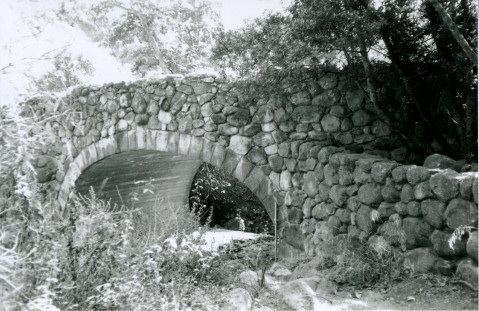The History of Rattlesnake Canyon
Origins of Both 'Rattlesnake' and 'Las Canoas' Remain a Mystery

Rattlesnake Canyon is one of the most popular hiking and recreational areas in Santa Barbara. The Spanish first “developed” the canyon in the early 1800s, evidence of which can still be seen today. The Spanish called the canyon Las Canoas (The Canoes), for reasons that remain a mystery. In the second half of the 1800s, the canyon came to be called Rattlesnake, again for unknown reasons, for there is no evidence that the canyon ever harbored more of these reptiles than any other local wilderness area.

Around 1808, Chumash laborers constructed a dam and an aqueduct to connect the canyon creek to the rest of the Santa Barbara Mission water system. The dam and part of the aqueduct are still extant. In the 1870s, one of the first settlers was Mattias Reyes, who lived in an adobe in the lower portion of the canyon.
In 1900, William O’Connor took out a 160-acre homestead in a meadow in the upper reaches of the canyon. By law, he had to put up some kind of structure to lay claim to the land; he gathered five-gallon kerosene cans, crushed them, and used them for the roof and sides for his “Tin Can Shack.” It was destroyed by wildfire in 1925.
Another interesting feature of the canyon is the stone bridge built by mason Peter Poole in 1919. At the behest of County Supervisor Sam Stanwood, Poole used rounded stones for the bridge façade, as Stanwood believed it would better blend the bridge into its natural surroundings. Owen O’Neill, longtime County Surveyor, was the designer.
Ray L. Skofield, a New York City stockbroker, purchased the canyon in 1927. In the mid-1920s, his family moved here, hoping the climate would help Skofield’s ailing wife. Soon after his arrival, Skofield began construction of a large house off of present-day Gibraltar Road.
The 1929 stock market crash halted construction of the home. In 1931, Skofield’s son, Hobart, arrived to manage his father’s properties. Hobart had left his New York banking career in 1926 to indulge his love of books and had gone to work for William Edwin Rudge, owner of one of the largest fine printing houses in the country. Hobart remained a life-long bibliophile. He eventually gave his collection of 13,000 books to the library at UCSB.
Ray Skofield, a founding member of Rancheros Visitadores, set aside part of his property for the group to use on their annual trek over the Santa Ynez Mountains. In 1950, Hobart oversaw the sale of this 35-acre parcel to the Rancheros for $15,000. Housing development in the ensuing years made the site less useful to the Rancheros, and in 1964, the group sold the land to the city, which christened it Skofield Park.
In 1947, Hobart entertained an offer from the Holy Cross Episcopalian Monastery Order for his father’s still uncompleted canyon house. The order was looking for a West Coast retreat to complement their retreat in New York. There the order was housed until wildfire in 2008 destroyed the compound and the order moved to the 500 block of East Los Olivos Street.
Toward the end of the 1960s, Hobart and his sister, Ermine, decided to offer the balance of the family holdings to the city as parkland. In 1970, with a combination of city, county, and federal funds, the transfer of more than 450 acres was completed — a gift to the thousands of hikers who enjoy the area annually.
Michael Redmon, director of research at the Santa Barbara Historical Museum, will answer your questions about Santa Barbara’s history. Write him c/o The Santa Barbara Independent, 122 West Figueroa Street, Santa Barbara,CA 93101.



